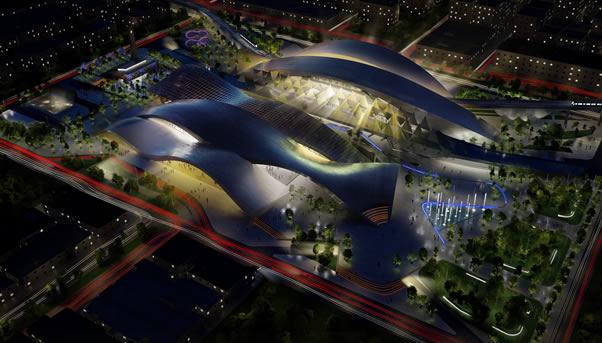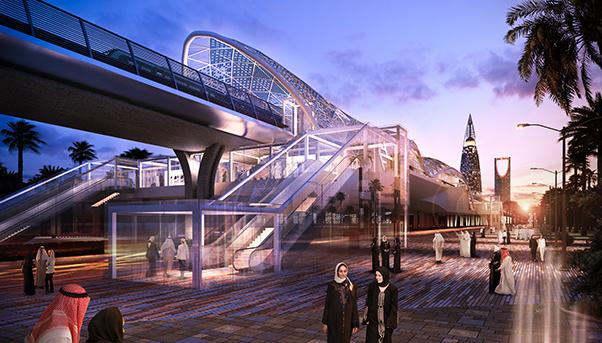
As guardian of Islam’s holiest sites, Saudi Arabia might be a conservative country, but the importance of development is not lost on it.
In 2012, Saudi Arabia was the biggest beneficiary of an estimated $40 billion of foreign direct investment in the member countries of the Gulf Cooperation Council, according to a 2013 report by the Oxford Business Group, citing industry figures. The GCC comprises Saudi Arabia, Bahrain, Kuwait, Oman, Qatar and the United Arab Emirates.
With a gross domestic product of more than $576.8 billion, Saudi Arabia has also become the largest economy in the Middle East and North Africa, ranking as one of the best places to do business in the World Bank’s regular survey.
After King Abdullah’s death in late January, his successor, Salman bin Abdulaziz, has vowed to maintain stability throughout the country while pursuing the same vision to modernize it.
His time as governor of Riyadh Province lends weight to his words. For five decades, he oversaw the transformation of the capital from a town to a shiny metropolis. The latest example of his ambitions is the construction of a massive public transit network in Riyadh. Government officials describe it as the world’s largest public transport system under development. Among the builders is Salini Impregilo.
Known as the Riyadh Public Transport Project, or RPTP, it is one of the many initiatives adopted by the government to deal with the myriad of challenges facing the country.
The High Commission for the Development of Arriyadh is the organization responsible for the planning and development of the city of Riyadh, in all economic, social, cultural, architectural and environmental aspects. Its executive branch is the Arriyadh Development Authority (ADA).
Saudi Arabia’s population is growing fast, with 70% of the population being below the age of 34, according to 2011 figures, which is adding even more pressure on the state to meet social and economic needs.
One of its responses to these challenges has been to invest in public infrastructure, such as the Riyadh public transit. At a cost of more than $20 billion, it will have six subway lines, designated by different colours, crisscrossing the city for a combined 176 kilometres.
It will employ some 50,000 people up until its completion at the end of 2018.
In addition to creating jobs, the project will improve the quality of life of the city’s residents by reducing traffic congestion and air pollution. It will also make it easier for people of modest means to move about the city, as well as women because they are not allowed to drive cars.

The network being built will have electric, driverless trains gliding along each of the six lines above and below ground. The train’s carriages will be divided into three classes: first, family and single.
Famous architects like Zaha Hadid and Snøhetta have designed main stations along its lines.
“This is the biggest infrastructure project to be undertaken in the Kingdom of Saudi Arabia and is a cornerstone of the bold future we envision for our city,” a statement issued in 2013 at the time of the awarding of the contracts quoted Ibrahim Bin Muhammad Al Sultan, President of ADA, as saying. In early 2015, Mr. Al Sultan has also been appointed Mayor of Riyadh, in addition to his responsibilities at ADA.
The expected rise in the number of residents from 5.7 million today to 8.3 million by 2030 makes the project all the more important.
One of the three consortia involved in the project is the ArRiyadh New Mobility (ANM) which includes Salini Impregilo, as well as Italy’s Ansaldo STS, Canada’s Bombardier, India’s Larsen & Toubro and Saudi Arabia’s Nesma. ANM has a $5.94 billion order to build the longest of the six lines, known as Line 3 (Orange Line), 41.2Km. The route is mostly elevated along the Western part of Al-Madinah Al-Munawwarah Road, then underground in bored and mined tunnels in the central section of the line, and generally at grade along Prince Saad Ibn Abdulrahman Road in the East. Line 3 features 22 stations, including the Main Stations “Qasr Al-Hokm” and “Western Station”, 2 maintenance depots at the West and East extremities and 6 Park & Ride. About 21Km of viaduct will be built with prefabricated blocks erected using launching machines. TBM (Tunnel Boring Machine) and Cut & Cover method will be used for the underground section of approximately 7Km.
Salini Impregilo’s operation in the Kingdom began back in 1966 with involvement in the development of important infrastructures and iconic projects such as the tallest building in Riyadh, the Kingdom Tower that became a landmark in the capital.
Other projects being pursued by Saudi Arabia include a $16.5 billion modern transportation system in the holy city of Makkah that would include underground and elevated metro lines.
There is also a number of rail networks that will link all the main cities and ports of the Kingdom with the other GCC countries.


